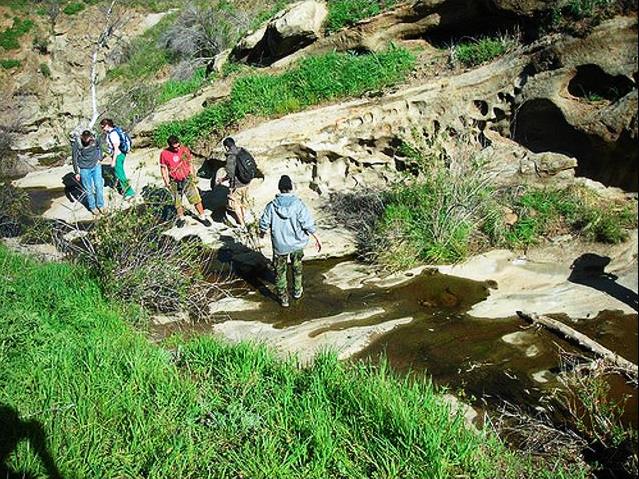
This EnviroReporter.com analysis supplements the exposé Brandeis-Bardin’s Toxic Denial. It compares two reports in order to see how many Brandeis-Bardin soil samples were found by the Department of Energy (DOE) to be over the background, or Background Threshold Value (BTV), of adjacent Area IV of the bordering Santa Susana Field Laboratory.
The DOE summary report was shared with American Jewish University (AJU) which gave it to the Jewish Journal in 2016. The weekly newspaper then published the report entitled Drainages from Area IV onto Brandeis Property Soil Data Summary – Soil Samples Exceeding DTSC Look-Up Table Values. Since AJU isn’t clear exactly when this summary was produced or by whom, it is assumed to be DOE and is referred to herein as “2016 DOE-AJU Summary Brandeis-Bardin Soils.”
EnviroReporter.com then compared DOE summary’s soil sampling results with the BTVs established for chemicals and radionuclides in adjoining Area IV. Those BTVs are the result of a $41.5 million EPA-funded study published in 2011 entitled SSFL Chemical Soil Background Study Chemical Analytes – Summary of BTV Results.
Determining the BTVs and amount of radiation contamination in Area IV and Northern Buffer Zone were part of the investigation conducted to implement the Administrative Orders on Consent (AOCs) that DOE and NASA signed with the state EPA’s Department of Toxic Substances Control. The AOCs empower the state to control the federal government’s order to clean up all contaminants to background levels.
DOE has agreed to remediate Area IV to each contaminant’s BTV. This one page DOE data summary yielded 21 Brandeis-Bardin soil samples which exceeded their respective Area IV background levels.
Mini-Glossary:
Area IV – Former nuclear research, reactors & radiation incineration site above Brandeis-Bardin
BTV – Background Threshold Value of toxic substance in Area IV of SSFL
DOE – Department of Energy
DTSC – Department of Toxic Substances Control
ER – EnviroReporter.com
PAH – Polycyclic Aromatic Hydrocarbons
ppb – parts per billion
ppm – parts per million
SSFL – Santa Susana Field Laboratory
Photographs by Danielle D.*
21 Brandeis-Bardin soil samples exceeded their respective Area IV BTVs
+++
ANTIMONY BTV: 0.738 MG/KG OR ppm
ANTIMONY Brandeis-Bardin (max): 2.22 ppm or 3.0 TIMES AREA IV BTV
[METAL – https://www.atsdr.cdc.gov/toxfaqs/tf.asp?id=331&tid=58:
“Exposure to antimony occurs in the workplace or from skin contact with soil at hazardous waste sites. Breathing high levels of antimony for a long time can irritate the eyes and lungs, and can cause problems with the lungs, heart, and stomach. This chemical has been found in at least 403 of 1,416 National Priorities List sites identified by the Environmental Protection Agency.”
“What is antimony?
Antimony is a silvery-white metal that is found in the earth’s crust. Antimony ores are mined and then mixed with other metals to form antimony alloys or combined with oxygen to form antimony oxide.
Little antimony is currently mined in the United States. It is brought into this country from other countries for processing. However, there are companies in the United States that produce antimony as a by-product of smelting lead and other metals.
Antimony isn’t used alone because it breaks easily, but when mixed into alloys, it is used in lead storage batteries, solder, sheet and pipe metal, bearings, castings, and pewter. Antimony oxide is added to textiles and plastics to prevent them from catching fire. It is also used in paints, ceramics, and fireworks, and as enamels for plastics, metal, and glass.”
w/
“In long-term studies, animals that breathed very low levels of antimony had eye irritation, hair loss, lung damage, and heart problems.”]
+++
NAPHTHALENE BTV: 2.39 ppb
NAPHTHALENE Brandeis-Bardin: 13 ppb or 5.4 TIMES AREA IV BTV
[PAH – https://www.atsdr.cdc.gov/toxfaqs/tf.asp?id=239&tid=43:
“Exposure to large amounts of naphthalene may damage or destroy some of your red blood cells. Naphthalene has caused cancer in animals.” & “Fuels such as petroleum and coal contain naphthalene… The major commercial use of naphthalene is in the manufacture of polyvinyl chloride (PVC) plastics.”]
w/
“Naphthalene can become weakly attached to soil or pass through soil into underground water.”
Polycyclic Aromatic Hydrocarbons (PAHs)
[https://www.atsdr.cdc.gov/phs/phs.asp?id=120&tid=25:
“In the environment, you are most likely to be exposed to PAH vapors or PAHs that are attached to dust and other particles in the air. Sources include cigarette smoke, vehicle exhausts, asphalt roads, coal, coal tar, wildfires, agricultural burning, residential wood burning, municipal and industrial waste incineration, and hazardous waste sites.”
“People living near waste sites containing PAHs may be exposed through contact with contaminated air, water, and soil.”
“Studies of people show that individuals exposed by breathing or skin contact for long periods to mixtures that contain PAHs and other compounds can also develop cancer.”]
+++
FLUORENE BTV: (drainage) 2.83 ppb
Fluorene Brandeis-Bardin: 16 ppb or 5.7 TIMES AREA IV BTV
[PAH – http://www.cdc.gov/niosh/idlh/7782414.html]
BIS(2-ETHYLHEXY)PHTHALATE BTV: 40.6 ppb
Bis(2-Ethylhexyl)phthalate Brandeis-Bardin: 64 ppb or 1.58 TIMES AREA IV BTV
[PAH – Also called DI(2-ETHYLHEXYL) PHTHALATE (http://www.cdc.gov/niosh/ipcsneng/neng0271.html) which leads to https://www.atsdr.cdc.gov/substances/toxsubstance.asp?toxid=65:
“Di(2-ethylhexyl)phthalate (DEHP)
Affected Organ Systems: Reproductive (Producing Children)
Cancer Classification: NTP: Reasonably Anticipated to be a Human Carcinogen
Chemical Classification: Phthalates
Summary: Di(2-ethylhexyl) phthlate (DEHP) is a manufactured chemical that is commonly added to plastics to make them flexible. DEHP is a colorless liquid with almost no odor. DEHP is present in plastic products such as wall coverings, tablecloths, floor tiles, furniture upholstery, shower curtains, garden hoses, swimming pool liners, rainwear, baby pants, dolls, some toys, shoes, automobile upholstery and tops, packaging film and sheets, sheathing for wire and cable, medical tubing, and blood storage bags.”]
ENDOSULFAN I BTV: 0.107 ppb
Endosulfan I Brandeis-Bardin: 0.92 ppb or 8.60 TIMES AREA IV BTV
[ENDOSULFAN I is an insecticide: https://www.atsdr.cdc.gov/toxfaqs/tf.asp?id=608&tid=113
“How might I be exposed to endosulfan?”
“Touching contaminated soil or fruits or plants that have been sprayed with endosulfan will result in a small amount entering the body through the skin.”
[ER – Endosulfan I wasn’t used on areas tested in ravines. It was used uphill at SSFL like the other chemicals and heavy metals here. Also, the reason there are BTVs for these toxic substances in the first place is because they occur enough in Area IV to warrant it.]
ENDRIN ALDEHYDE BTV: 0.547 ppb
Endrin Aldehyde Brandeis-Bardin: 0.98 ppb or 1.79 TIMES AREA IV BTV
[Pesticide: https://www.atsdr.cdc.gov/toxfaqs/tf.asp?id=616&tid=114
Highlights
Exposure to endrin can cause various harmful effects including death and severe central nervous system injury. Swallowing very large amounts of endrin may cause convulsions and kill you in a few minutes or hours. Exposure to high doses may result in headaches, dizziness, nervousness, confusion, nausea, vomiting, and convulsions. No long-term health effects have been noted in workers. Endrin has been found in at least 120 of the 1,430 National Priorities List sites identified by the Environmental Protection Agency (EPA).
What is endrin?
Endrin is a solid, white, almost odorless substance that was used as a pesticide to control insects, rodents, and birds. Endrin has not been produced or sold for general use in the United States since 1986.
&
“The persistence of endrin in the environment depends highly on local conditions. Some estimates indicate that endrin can stay in soil for over 10 years.” AND “You may be exposed to endrin in air, water, or soil if you live near a hazardous waste site.”]
+++
FLUORANTHENE BTV: Drainage 2.87 ppb
Fluoranthene Brandeis-Bardin: 6.9 ppb or 2.4 TIMES AREA IV BTV
[PAH – http://www.speclab.com/compound/c206440.htm:
“CONSTITUENT OF COAL TAR & PETROLEUM DERIVED ASPHALT USED AS LINING MATERIAL TO PROTECT INTERIOR OF STEEL & DUCTILE-IRON POTABLE WATER PIPES AND STORAGE TANKS RESEARCH CHEMICAL”]
PHENANTHRENE BTV: 1.39 ppb
Phenanthrene Brandeis-Bardin: 9.6 ppb or 6.9 TIMES AREA IV BTV
[PAH – http://www.cdc.gov/biomonitoring/Phenanthrene_BiomonitoringSummary.html:
“Phenanthrene is used in manufacturing dyestuffs and explosives and in biological research.”]
+++
PYRENE BTV: Drainage 2.54 ppb
Pyrene Brandeis-Bardin: 6 ppb or 2.4 TIMES AREA IV BTV
[PAH – http://www.cdc.gov/niosh/ipcsneng/neng1474.html:
“The substance can be absorbed into the body by inhalation, through the skin and by ingestion.”
&
“Exposure to sun may provoke an irritating effect of pyrene on skin and lead to chronic skin discoloration.”]
DIELDRIN BTV: 0.166 ppb
Dieldrin Brandeis-Bardin: 0.52 ppb or 3.1 TIMES AREA IV BTV
[INSECTICIDE – https://www.atsdr.cdc.gov/toxfaqs/tf.asp?id=316&tid=56:
“Aldrin and dieldrin build up in the body after years of exposure and can affect the nervous system. Aldrin has been found in at least 207 of the 1,613 National Priorities List sites identified by the Environmental Protection Agency (EPA). Dieldrin has been found in at least 287 of the 1,613 sites.”
&
“Neither substance occurs naturally in the environment. From the 1950s until 1970, aldrin and dieldrin were widely used pesticides for crops like corn and cotton. Because of concerns about damage to the environment and potentially to human health, EPA banned all uses of aldrin and dieldrin in 1974, except to control termites. In 1987, EPA banned all uses.”
&
“Air, surface water, or soil near waste sites may contain higher levels.”
&
“In animals, oral exposure to lower levels for a long period also affected the liver and decreased their ability to fight infections. We do not know whether aldrin or dieldrin affect the ability of people to fight disease.”]
GAMMA BHC – Lindane BTV: 0.0717 ppb
Gamma BHC – Lindane Brandeis-Bardin: 0.34 ppb or 4.7 TIMES AREA IV BTV
[PESTICIDE – http://www.cdc.gov/niosh/ipcsneng/neng0053.html:
aka Lindane
“The substance can be absorbed into the body by inhalation through the skin and by ingestion.”
&
“EFFECTS OF LONG-TERM OR REPEATED EXPOSURE:
The substance may have effects on the liver. Tumours have been detected in experimental animals but may not be relevant to humans.”]
HEPTACHLOR EPOXIDE BTV: 0.156 ppb
Heptachlor Epoxide Brandeis-Bardin: 0.24 ppb or 1.5 TIMES AREA IV BTV
[PESTICIDE – https://www.atsdr.cdc.gov/toxfaqs/tf.asp?id=744&tid=135:
“Little is known about their health effects in humans. At high levels, they may cause damage to your liver and nervous system. Exposure of animals during gestation and infancy can result in damage to the nervous system and the immune systems. Heptachlor and heptachlor epoxide have been found in at least 210 and 200, respectively, of the 1,684 National Priority List sites identified by the Environmental Protection Agency (EPA).”
&
“Heptachlor epoxide can stay in the soil and water for many years.”
&
“How might I be exposed to heptachlor and heptachlor epoxide?
• Eating fish, dairy products, and fatty meats from animals exposed to heptachlor in their food.
• Breast milk from mothers who had high exposures can expose breastfed infants.
• Drinking water, breathing air, or touching soil at waste sites that contain these substances.”]
MOLYBDENUM BTV: Santa Susana Drainage 1.86 ppm
Molybdenum Brandeis-Bardin: 10.7 ppm or 5.8 TIMES AREA IV BTV
[METAL – http://www.cdc.gov/biomonitoring/Molybdenum_BiomonitoringSummary.html:
“Elemental molybdenum is a silver-white, hard metal widely used to add strength and hardness and retard corrosion in metal alloys. Compounds of molybdenum are also used as corrosion inhibitors,”
&
“Human health effects from molybdenum at low environmental doses or at biomonitored levels from low environmental exposures are unknown.”]
SELENIUM BTV: Santa Susana Drainage 0.595 ppm
Selenium Brandeis-Bardin: 1.04 ppm or 1.8 TIMES AREA IV BTV
[METAL – https://www.atsdr.cdc.gov/ToxProfiles/tp92.pdf:
457 pp
p 23/457: “People may be exposed to higher-than-normal levels of selenium at hazardous waste sites by swallowing soil or water, or by breathing dust. In some parts of the United States, especially in the western states, some soils naturally have higher levels of selenium compounds. Some plants can build up selenium to levels that harm livestock feeding on them. In these areas, people could be exposed to too much selenium if they eat a lot of locally grown grains and vegetables or animal products that have built up high levels of selenium. People may also be exposed to selenium from industrial sources.”
P. 24/457: “Hazardous waste sites at which selenium is present could represent a major source of exposure. The way that selenium can enter the body from a particular site depends on such factors as whether vegetables are grown in soil in which selenium from the site has been deposited, whether water at the site contains selenium and is able to flow into drinking water supplies, and whether selenium dust blows into the air.”
P. 24/457: “Selenium can build up in the human body, however, if exposure levels are very high or if exposure occurs over a long time. The amount that builds up in the body depends on the chemical form of the selenium. It builds up mostly in the liver and kidneys but also in the blood, lungs, heart, and testes. Selenium can build up in the nails and in hair, depending on time and amount of exposure.”
P. 25/457: “Even if mildly excessive amounts of selenium are eaten over long periods, brittle hair and deformed nails can develoP. In extreme cases, people may lose feeling and control in arms and legs.”
P. 271/457: “Selenium is estimated to be the 69th most abundant element in the earth’s crust, with an average concentration of 0.05–0.09 mg/kg (Glover et al. 1979).”
[ER – Therefore 1.04 ppm Brandeis-Bardin sample is 11.6 to 20.8 times Earth’s average soil selenium concentration strongly suggesting SSFL origins.
P. 271/457: “The disposal of selenium contaminated waste water has resulted in elevated selenium levels in sediments of Lake Belews, North Carolina. The concentration of selenium in sediments ranged from 4 to 12 μg/g (pre-1986), but has dropped to 1–4 μg/g (1996) due to the discontinued release of selenium laden waste water from a local coal fired power plant (Lemly 1997).”
[ER – By comparison, this means the 1.04 ppm Brandeis-Bardin sample is 86.7 to 260 times elevated selenium sediments and 260 to 1,040 times recovered selenium sediments.]
BETA BHC BTV: 0.169 ppb
Beta BHC Brandeis-Bardin: 1.3 ppb or 7.7 TIMES AREA IV BTV
[PESTICIDE – http://www.cdc.gov/niosh/ipcsneng/neng0796.html SAYS SAME AS BETA-HEXACHLOROCYCLOHEXANE:
“PREVENT DISPERSION OF DUST! STRICT HYGIENE! AVOID EXPOSURE OF (PREGNANT) WOMEN!”
&
“The substance decomposes in a fire, producing very toxic fumes including phosgene (see ICSC 0007) and hydrogen chloride (see ICSC 0163).”
&
“The substance can be absorbed into the body by inhalation of its aerosol, through the skin or by ingestion.”
&
“EFFECTS OF LONG-TERM OR REPEATED EXPOSURE:
The substance may have effects on the blood, liver, kidney. This substance is possibly carcinogenic to humans. Animal tests show that this substance possibly causes toxic effects upon human reproduction.”
“It is strongly advised that this substance does not enter the environment.”]
HEPTACHLOR BTV: 0.143 ppb
Heptachlor Brandeis-Bardin: 0.54 ppb or 3.8 TIMES AREA IV BTV
[PESTICIDE – https://www.atsdr.cdc.gov/toxfaqs/tf.asp?id=744&tid=135:
“Heptachlor was used extensively in the past for killing insects in homes, buildings, and on food crops. These uses stopped in 1988. Currently it can only be used for fire ant control in underground power transformers.”
&
“How likely are heptachlor and heptachlor epoxide to cause cancer?
Lifetime exposure to heptachlor resulted in liver tumors in animals. The International Agency for Research on Cancer (IARC) and the EPA have classified heptachlor as a possible human carcinogen. EPA also considers heptachlor epoxide as a possible human carcinogen.”
&
“People who live in homes where heptachlor was used for termite control or on farms where heptachlor was used on crops may have a higher risk of exposure through contaminated crops, soil, water, and air. To avoid exposure from contaminated soil, you should discourage your children from eating dirt. Make sure they wash their hands frequently and before eating. Discourage children from putting their hands in their mouths or other hand-to-mouth activities.”]
2,4,5-TP BTV: 0.474 ppb
2,4,5-TP Brandeis-Bardin: 0.98 ppb or 2.1 TIMES AREA IV BTV
[HERBICIDE – ALSO NAMED SILVEX https://www.atsdr.cdc.gov/spl/resources/1992_atsdr_substance_priority_list.html WHERE IT’S #242 AND http://sitem.herts.ac.uk/aeru/ppdb/en/Reports/300.htm:
Respiratory tract irritant & Skin irritant & Eye irritant]
+++
2,4,5-T BTV: 0.891 ppb
2,4,5-T Brandeis-Bardin: 2.1 ppb or 2.4 TIMES AREA IV BTV
[HERBICIDE – http://www.cdc.gov/niosh/idlh/93765.html:
“Immediately Dangerous to Life or Health Concentrations (IDLH)”
&
“Colorless to tan, odorless, crystalline solid.”]
MCPP (Mecoprop) BTV: 284 ppb
MCPP (Mecoprop) Brandeis-Bardin: 1300 ppb or 4.6 TIMES AREA IV BTV
[HERBICIDE – http://www.cdc.gov/niosh/ipcsneng/neng0055.html:
“The substance can be absorbed into the body by inhalation of its aerosol, through the skin and by ingestion.”
&
“Mecoprop is a chlorophenoxy-herbicide which, as a group, has been classified by IARC (1987) as possibly carcinogenic to humans, but the data on this specific substance are inconclusive.”]
+++
MIREX BTV: 0.398 ppb
Mirex Brandeis-Bardin: 0.62 ppb or 1.6 TIMES AREA IV BTV
[HERBICIDE – https://www.atsdr.cdc.gov/toxfaqs/tf.asp?id=642&tid=118:
“Exposure to mirex and chlordecone occurs mainly from touching or eating soil or food that contains the chemicals. At high levels, these chemicals may cause damage to the skin, liver, or nervous and reproductive systems. Mirex has been found in at least 7 of the 1,430 National Priorities List sites identified by the Environmental Protection Agency (EPA); chlordecone has been found at 2 sites.”
&
“Mirex and chlordecone have not been manufactured or used in the United States since 1978. Mirex was used to control fire ants, and as a flame retardant in plastics, rubber, paint, paper, and electrical goods from 1959 to 1972.”
“Mirex and chlordecone break down slowly in the environment, and they may stay for years in soil and water. They do not evaporate to any great extent from surface water or surface soil. Mirex and chlordecone do not dissolve easily in water, but they easily stick to soil and sediment particles.”
&
“How might I be exposed to mirex and chlordecone?
Touching or ingesting contaminated soil near hazardous waste sites.
Ingesting contaminated fish or other animals living near hazardous waste sites.
Nursing infants of mothers living near hazardous waste sites may be exposed to mirex through their mothers’ milk.”
&
“Animal studies have shown that ingesting high levels of mirex can harm the stomach, intestine, liver, kidneys, eyes, thyroid, and nervous and reproductive systems.”
&
“How likely are mirex and chlordecone to cause cancer?
The Department of Health and Human Services (DHHS) has determined that mirex and chlordecone may reasonably be anticipated to be carcinogens.
There are no studies available on whether mirex and chlordecone are carcinogenic in people. However, studies in mice and rats have shown that ingesting mirex and chlordecone can cause liver, adrenal gland, and kidney tumors.”]
DELTA BHC BTV: 0.164 ppb
Delta BHC Brandeis-Bardin: 0.74 ppb or 4.5 TIMES AREA IV BTV
[PESTICIDE – https://cameochemicals.noaa.gov/chemical/16177:
“Poison”
&
“Slightly musty odor.”
&
“ACUTE/CHRONIC HAZARDS: Highly toxic. May cause irritation on contact. Hazardous decomposition products. (NTP, 1992)”
&
“Since this chemical is a known or suspected carcinogen you should contact a physician for advice regarding the possible long term health effects and potential recommendation for medical monitoring.”
+++
FLUORENE BTV: Drainage 2.83 ppb
Fluorene Brandeis-Bardin: 8.7 ppb or 3.1 TIMES AREA IV BTV
[PAH – http://www.cdc.gov/niosh/idlh/7782414.html:
“Immediately Dangerous to Life or Health Concentrations (IDLH)”
&
“Pale-yellow to greenish gas with a pungent, irritating odor.”
With:
https://www.atsdr.cdc.gov/toxprofiles/tp69.pdf:
“Fifty-four PAHs have been identified at one or more NPL hazardous waste sites. These 54 are… fluorine.”
“Both male and female mice exposed to 250 mg/kg/day fluorene exhibited hematologic effects, including decreased packed cell volume and hemoglobin content (EPA 1989e).”
&
“Increased relative liver weight was observed in all treated groups, whereas increased absolute and relative liver weight was observed in the mid- and high-dose animals receiving 0, 125, 250, and 500 mg/kg/day fluorine for 13 weeks (EPA 1989e).”
&
“Administration of 51.4 mg/kg/day acenaphthene or 180 mg/kg/day fluorene resulted in statistically significant increases in liver weight compared to controls, which may have indicated an effect on regeneration, although rates of cell proliferation were not determined.”
&
“After administration of 500 mg/kg/day fluorene for 13 weeks; however, female mice exhibited increased body weight, although male mice showed no effect at the same dose level (EPA 1989e).”
&
“After administration of 2.50 mg/kg/day fluorene for 13 weeks, however, increased absolute and relative spleen weight was seen in both sexes (EPA 1989e).”
“Fluorene.
• An MRL of 0.4 mg/kg/day has been derived for intermediate-duration oral exposure (15-364 days) to fluorene.
The MRL was based on a minimal LOAEL of 125 mg/kg/day for relative liver weight (EPA 1989e). Four groups of CD-l mice (20/sex/group) were gavaged daily with 0, 125, 250, or 500 mg/kg/day fluorene for 90 days. The toxicological evaluations of this study included body weight changes, food consumption, mortality, clinical pathological evaluations (including hematology and clinical chemistry), organ weights and histopathological evaluations of target organs. The results of this study indicated no treatment-related effects on survival, body weight changes, total food intake, or ophthalmological alterations. All treated male mice exhibited increased salivation, hypoactivity, and urine-wet abdomens. A significant decrease in red blood cell count and packed cell volume was observed in females treated with 250 mg/kg/day and in males and females at 500 me/kg/day. Decreased hemoglobin concentration was also observed in the high-dose group. A dose-related increase in relative liver weight was observed in all treated mice, and in absolute liver weight at >250 mg/kg/day. A significant increase in absolute and relative spleen and kidney weight was observed at 250 mg/kg/day.. Increases in absolute and relative liver and spleen weights at the high dose were accompanied by histopathological increases in hemosiderin in the spleen and in the Kupffer cells of the liver. The LOAEL is 125 mg/kg/day based on increased relative liver weight. There was no NOAEL. The MRL was obtained by dividing the LOAEL value by 300 (3 for a minimal LOAEL, 10 for extrapolation from animals to humans, and 10 for human variability) and rounding to one significant figure.”
&
“Fluorene is used as a chemical intermediate in many chemical processes, in the formation of
polyradicals for resins, and in the manufacture of dyestuffs (Hawley 1993; HSDB 1994).
Phenanthrene is used in the manufacture of dyestuffs and explosives and in biological research
(Hawley 1987; HSDB 1994). Fluoranthene is used as a lining material to protect the interior of steel and ductile-iron drinking water pipes and storage tanks (NRC 1983).”
“Fluorene from an abandoned creosote pit was found to migrate through sand and clay into groundwater (Wilson et al. 1986). PAHs have also been shown to be transported laterally within contaminated aquifers (Ehrlich et al. 1982).
&
“Anthracene, acenaphthene, fluorene, and phenanthrene are chemical intermediates used in the manufacture of dyes, plastics, pesticides, explosives, and chemotherapeutic agents (Hawley 1987; HSDB 1992; Windholz 1983).]
*Public photographs of a Brandeis-Bardin Campus survival camping class March 2, 2008 are reprinted through Fair Use and credited to Danielle D.
27 Years of Award-Winning SSFL/Rocketdyne Reporting
1998 – 2025
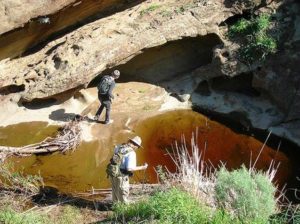
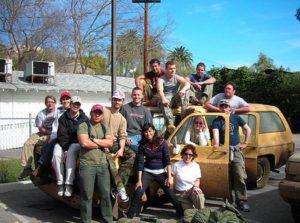
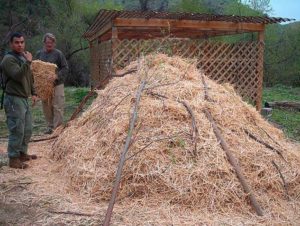
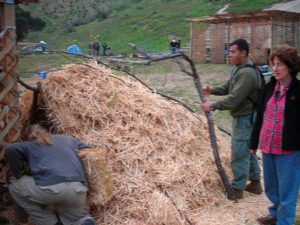
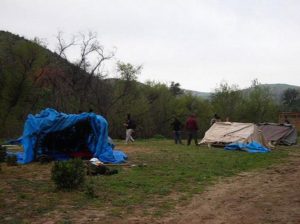
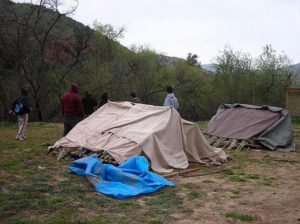
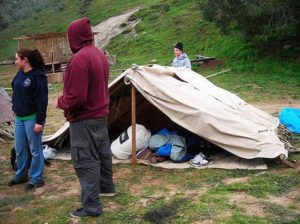
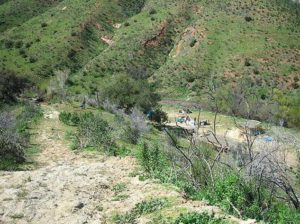


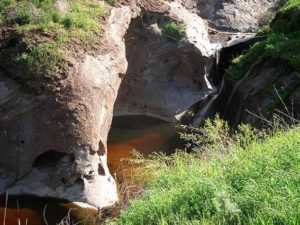
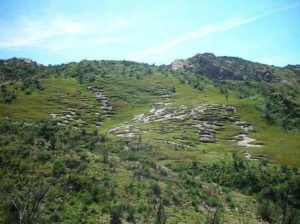
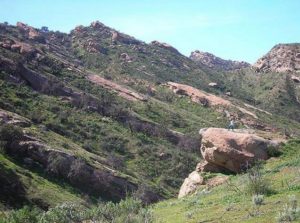
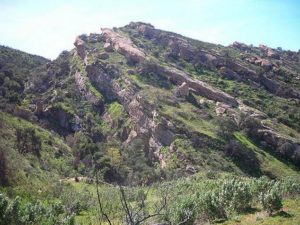
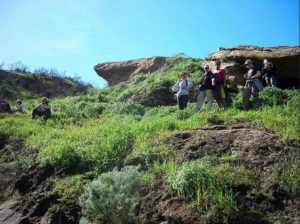
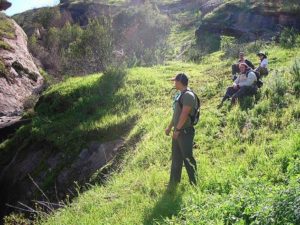
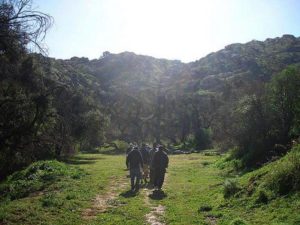
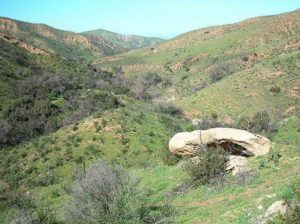
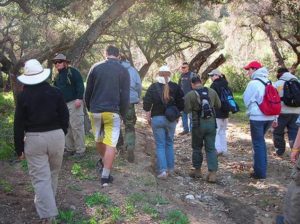
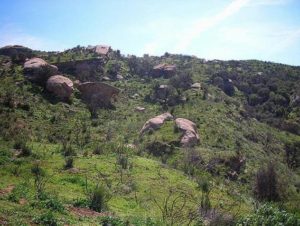
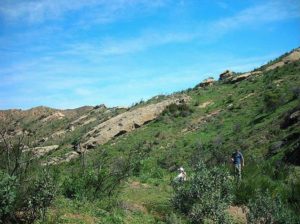
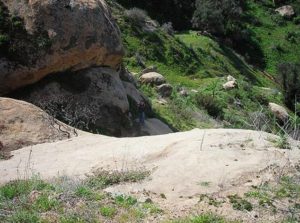
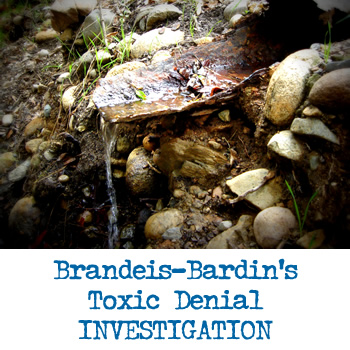












Recent Comments